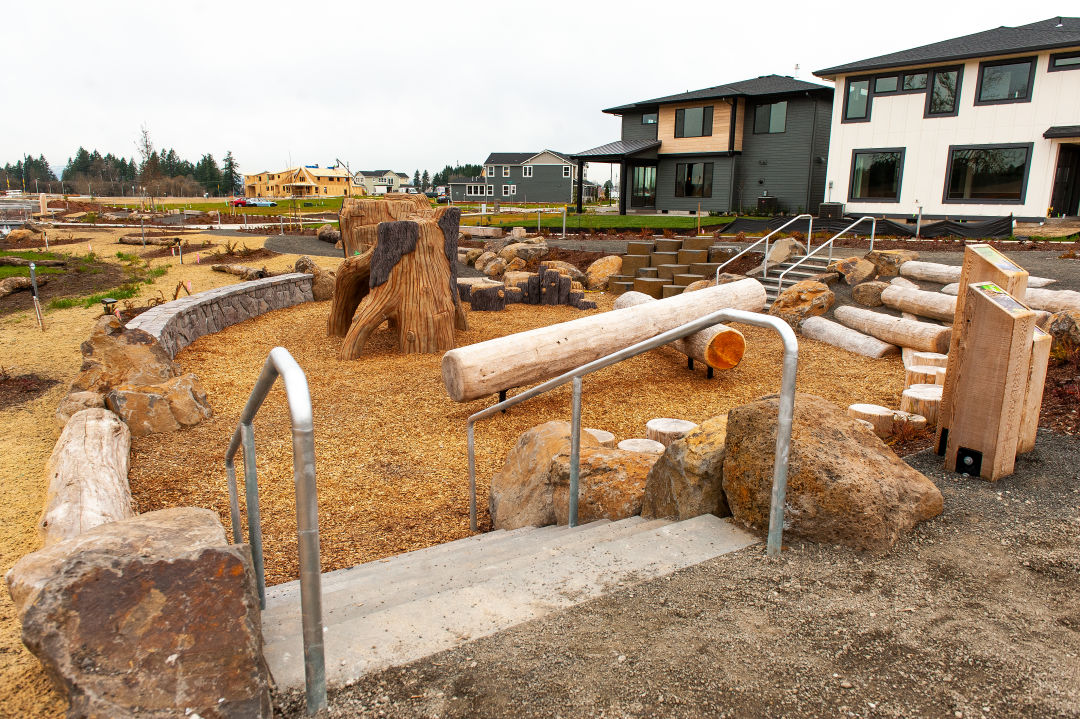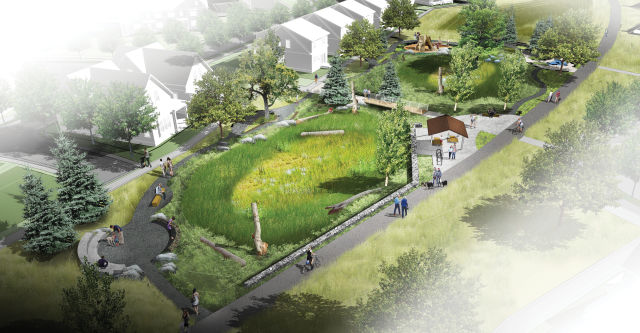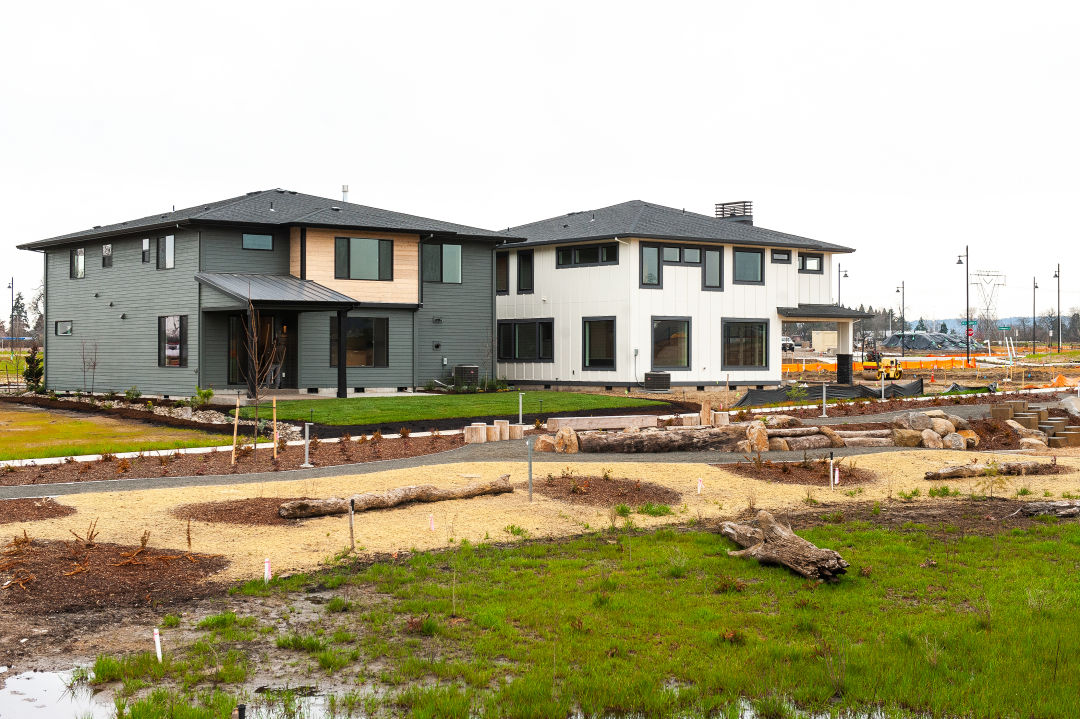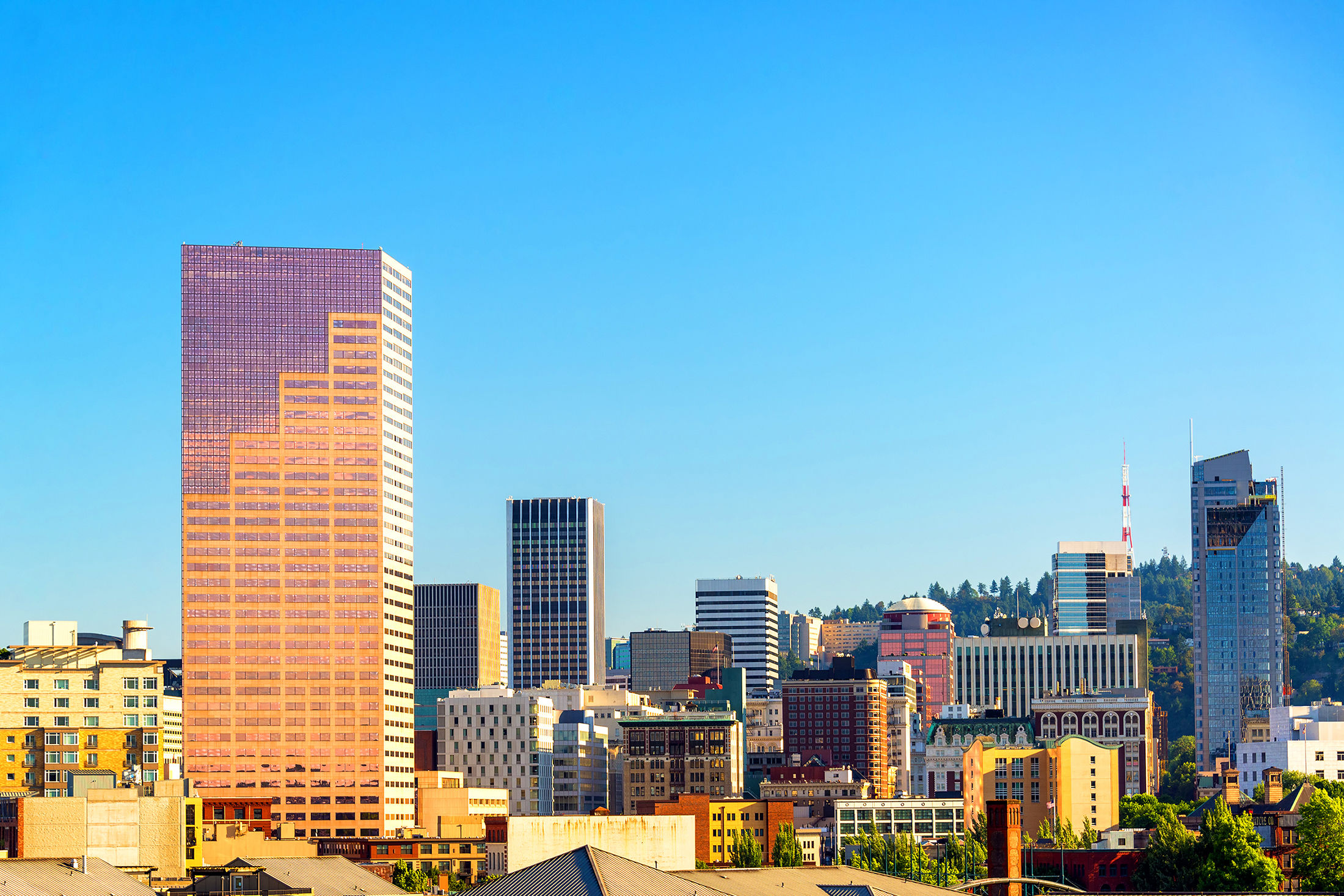Welcome to Oregon’s Largest-Ever Planned Community

A future playground at Reed's Crossing
If you build it ... you know the drill. In Hillsboro—the fast-growing city of about 100,000 just west of Portland—behemoths like Intel, Nike, and Tektronix have long squeezed a real estate market that can’t quite catch up. Case in point: between 2010 and 2016, Washington County produced just 71 new units for every 100 new households formed—many of them containing highly paid tech workers and medical professionals.
That means that when Intel’s Hillsboro D1X facility announced a 1.5-million-square-foot expansion in December, the pressure was on to identify housing for a projected 1,750 new workers. One potential release valve? Reed’s Crossing, a massive planned community now being built in South Hillsboro (near the Tualatin-Valley Highway and Aloha’s giant Harvey the Rabbit statue) on land once owned by the Sisters of St. Mary.

Once complete, the 463-acre development designed by San Diego–based Newland Communities will comprise 4,000 homes, from $300K townhouses to $700K single-family homes. Hillsboro mayor Steve Callaway is already a fan.
“It’s the largest planned development in the history of the state,” says Callaway. “It’s like, wow, right here in little old Hillsboro! It has been in the works for years; it might look like overnight, [but] there’s a lot of work that goes into an overnight success.”
According to David Brentlinger, Newland’s on-site VP of operations, Reed’s Crossing’s first model homes will be ready for viewing this spring. The rest of the development will roll out in phases, with an apartment complex and elementary school open by fall 2021, and, eventually, a town center with restaurants, grocery outlets, and retail establishments. (Brentlinger visualizes a Trader Joe’s, along with a coffeeshop and a day care center.) Planned completion for the whole project is 2026.
Suburban utopia? Maybe. When all the pieces are in place, Brentlinger says Reed’s Crossing should feel like a real neighborhood—hopefully avoiding the cookie-cutter image of other insta-communities (as mined, to horrific ends, in movies like The Truman Show and Stepford Wives).
“The whole idea is authenticity,” says Brentlinger. “Yes, it’s a planned community. Yes, we’ve planned everything in advance. But, it’s with a goal that it’s an integrated multifunctional community, rather than just a plastic injection molding.”

Future homes at Reed's Crossing
One differentiator, he hopes, will be its green qualities: “solar ready” homes, natural areas, and five wetland acres lush with native trees and sedges. Unlike nearby Orenco Station, a community planned in the 1990s, Reed’s Crossing doesn’t center on a MAX stop, but does emphasize walkability, with a 23-acre greenway and bike lanes. It aims to attract 40 percent of buyers from the baby boomer age bracket, and a quarter each millennials and Generation X.
“We’re not just trying to build lots and get out,” says Brentlinger. “We’re trying to build a community that people want to stay in once their family grows or their life situation changes. This isn’t just a way station.”




